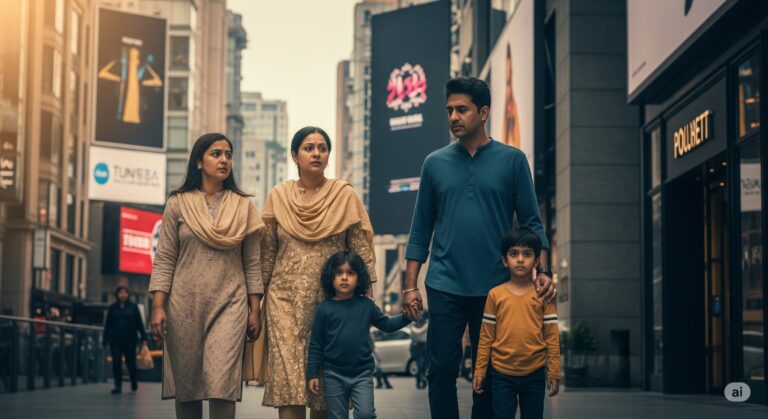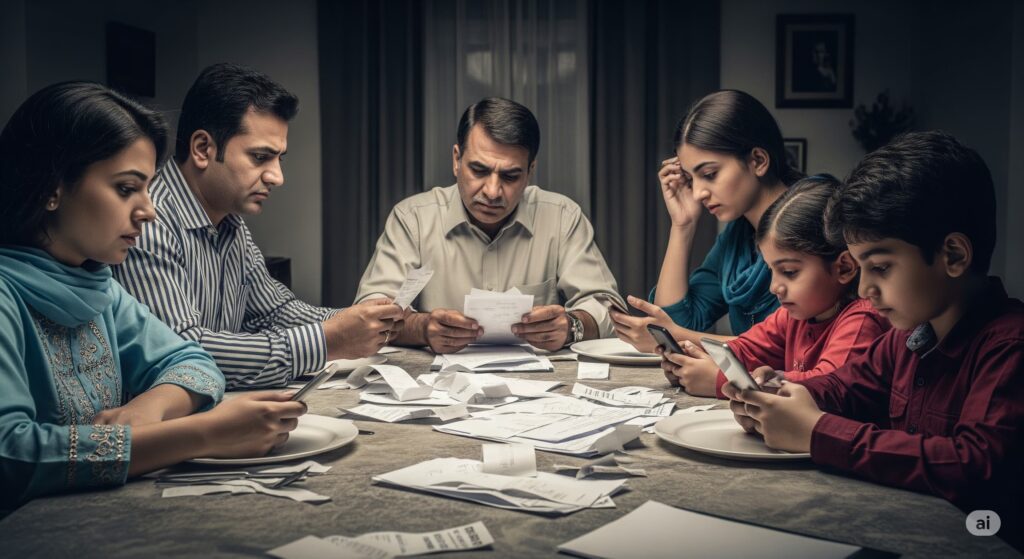The Middle-Class Mirage – Consumerism
Imagine you’re sitting with a cup of tea on a Sunday morning, scrolling through social media. An influencer flaunts a new iPhone. Another friend just bought a luxury car on installments. Ads pop-up offering zero-interest loans for a vacation abroad. You watch and think, “Am I falling behind?”. This feeling isn’t just yours. In South Asia, the middle class is caught in the flood of expectations of what success looks like, of what it means to “live well,” and of what you should have by now. Welcome to the Consumerism era.
In this article, we’ll explore how the rate race, fueled by easy credit and social pressure, is silently crushing the financial health and emotional well-being of South Asia’s middle class. We’ll share why it’s happening, what history tells us, and how families and individuals can protect themselves.
What Exactly Is Consumerism?
At its core, consumer culture is a social and economic system that encourages the acquisition of goods and services in ever-increasing amounts. In simpler terms, it’s the belief that happiness and success are directly tied to what you own.
In countries like India, Pakistan, Bangladesh, Nepal, and Sri Lanka, keeping up with the Joneses has gained traction over the last two decades, driven by globalization, the rise of social media, and aggressive marketing by local and international companies.
A Short History: From Simplicity to Spending
Historically, South Asia has had strong cultural values around simplicity, saving, and community living. But the economic liberalization of the 1990s changed everything. Countries like India opened their markets to foreign investors. Satellite television brought global lifestyles into living rooms. Mobile phones, once a luxury, became a necessity. Then came the internet and social media, which magnified global consumer trends.
As GDPs grew, so did aspirations. The middle class expanded, and with it, a thirst for better living like cars, homes, branded clothes, gadgets, foreign vacation trips, and the works. But this new lifestyle came with a catch: it was often financed by debt.
The Credit Trap
Banks and fintech startups saw an opportunity. Credit cards, personal loans, Buy-Now-Pay-Later (BNPL) schemes, and easy EMIs (Equated Monthly Installments) flooded the market.
- In India alone, consumer loans grew at an annual rate of 20% between 2017 and 2023, according to the Reserve Bank of India.
- Pakistan’s consumer financing touched PKR 900 billion by the end of 2023, as per the State Bank of Pakistan.
The message was clear: “Don’t wait. You deserve it now.”
But here’s the catch—these loans often come with hidden fees, high interest rates, and psychological pressure. People are using tomorrow’s income to pay for today’s desires.
The Social Media Effect
Platforms like Instagram, TikTok, and Facebook amplify consumer culture. We no longer compare ourselves to our neighbors; we compare ourselves to celebrities and influencers living aspirational lives. A 2021 study by Deloitte showed that over 65% of young Indians made purchases influenced by social media. The numbers are similar across urban Pakistan and Bangladesh. This “comparison culture” is toxic. It fuels unnecessary spending, anxiety, and dissatisfaction—even among people who are doing reasonably well by traditional standards.
Cost of Living vs. Wages
One of the most alarming aspects is that while consumer spending has increased, income levels have not kept pace.
- In Bangladesh, real wages have stagnated since 2018 while inflation has risen sharply.
- In India, the average salary of a white-collar worker grew by less than 5% annually, while urban living costs rose by over 8% per year in major cities.
This means that the middle class is constantly stretching their budgets, often relying on credit just to maintain a basic urban lifestyle.
The Emotional Burden
Financial stress leads to mental health issues, strained relationships, and a constant feeling of inadequacy. People are working longer hours not just to get ahead, but simply to stay afloat. A 2022 report by WHO highlighted a 25% increase in depression and anxiety globally post-COVID, with financial insecurity being a major factor. In South Asia, where financial literacy is low and stigma around mental health is high, this burden becomes even heavier.
The Ripple Effect on Families
Parents feel pressure to send kids to expensive schools. Weddings have become grander and more materialistic. Even funerals come with expectations of lavish spending. All this puts the middle class under immense financial pressure. Savings are sacrificed. Retirement planning is delayed. Emergency funds? Often non-existent.
How Did We Get Here?
- Cultural Shifts: From valuing simplicity to chasing status.
- Economic Policies: Liberalization brought in goods, services, and a consumer mindset.
- Technology: Digital advertising and fintech innovations made spending easier.
- Lack of Financial Education: People don’t learn about debt traps or compound interest in school.
What Can Be Done? Practical Steps
- Build Financial Literacy: Learn the basics—budgeting, saving, investing, and understanding interest rates. Platforms like Investopedia, Khan Academy, and local NGOs offer free resources.
- Delay Gratification: Not everything needs to be bought today. Waiting not only helps you save, but also lets you evaluate if the purchase is really worth it.
- Track Your Spending: Use mobile apps or simple notebooks. Awareness is the first step to control.
- Talk About Money: Break the taboo. Talk to family and friends about financial goals and limitations.
- Set Realistic Goals: Not everyone needs to own a house or drive a luxury car. Define success on your own terms.
- Educate the Next Generation: Teach kids early that happiness isn’t tied to material things.
Hope for the Future
There is a growing awareness among the youth and urban professionals about the dangers of unchecked consumer culture. Minimalist lifestyles, digital detoxes, and sustainable living are gaining popularity. Several fintech companies are now offering savings and budgeting tools instead of just promoting loans. Governments, too, are beginning to talk about financial literacy in policy discussions.
Final Thoughts: Time to Rethink “The Dream”
It’s not about rejecting all modern comforts. It’s about balance. It’s about not letting your self-worth be defined by what you buy.
So next time you feel the urge to “keep up,” pause and ask: Who are you really doing it for?
Let’s chase purpose, not just possessions.
References:
- Reserve Bank of India: www.rbi.org.in
- State Bank of Pakistan: www.sbp.org.pk
- World Bank South Asia Economic Focus 2023
- Deloitte Digital Consumer Trends 2021
- WHO Mental Health Report 2022
- McKinsey & Company Reports on Emerging Markets






